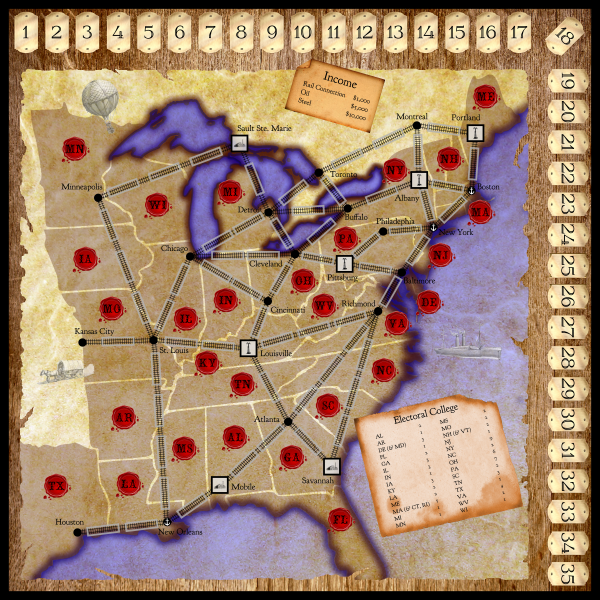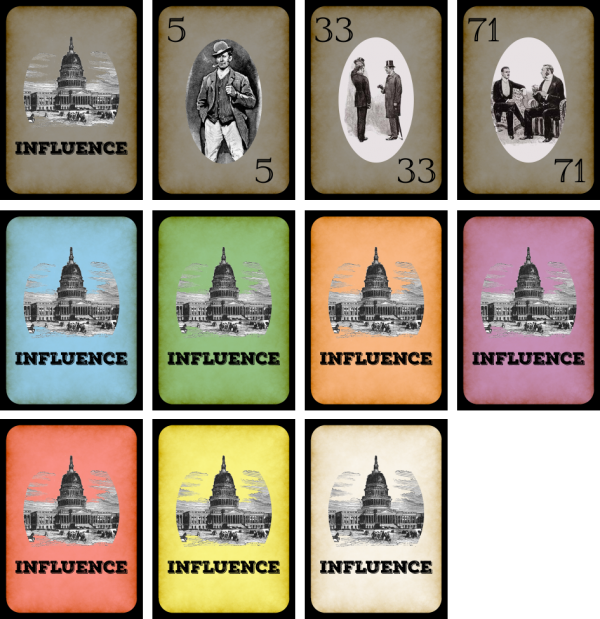Theme vs. Mechanics: Striking a Balance in Gilded Devils

One of the best tools in gaming's arsenal to expand the range of people playing games is an engaging theme. A game may be incredibly well designed, but it's hard to tell that from the box, and so its theme often has to do the heavy lifting of drawing in potential players. But integrating an attention-grabbing theme with solid game mechanics can be a tough proposition.
For myself and my co-designer, Patrick Margavio, the issue of building a game with a truly integrated theme is at the core of all our design decisions. We want our games to be accessible and engaging, but we don't want the theme to just simply be tacked on like a misleading movie trailer, only to trick you into playing a completely unrelated game underneath.
We wanted to avoid the trap of a theme applied on top of a completely different game, because we think it ultimately detracts from how fun a game can be. If you went into a game about interstellar diplomacy and war, but never really got to interact with other players, you'd be disappointed. On the other end of the spectrum, we tried to avoid the trap of making the mechanics serve the theme too much.

While there are some really excellent purist simulation games on the market, that's just not the sort of game we wanted to make. We didn't want overly complex rules, or game mechanics that sacrificed fun for rigid adherence to the theme of the game.
Instead, in Gilded Devils (now on Kickstarter), we decided on a few simple game mechanics we wanted to include (negotiation and asymmetrical gameplay), and then considered themes that worked well around that framework, but were still interesting and exciting on their own. Ultimately, we decided that America's Gilded Age worked well, giving a good atmosphere that encouraged players to be sneaky, with easily identifiable imagery, but not so narrow and specific of a theme as to limit what we could do with the game design.
This process extended to designing individual elements of the game. We used our research on the time period as inspiration for cards, the board, rules, components—pretty much everything—but ran it through a checklist of design concepts we had in mind for keeping the game accessible. That checklist basically came down to asking “would this historical component add complexity but not fun?” If the answer was yes, then we deviated from historical accuracy.

Ultimately, we decided to use an engaging theme, in this case a historical setting, to help engage players (you're a conniving politician, and you're a powerful but competitive captain of industry!). But we didn't allow it to bog down the fun once the game got rolling. No pesky travel-time limitations, just throw wads of ill-gotten cash at voters! Who cares where factories are actually located, just put them anywhere to cause the most dramatic tension at the game's climax!
In the end, theme is just another tool in board gaming's bag of tricks. It should be used to make games engaging, to make them fun, and to serve as a way to make a list of otherwise abstract rules make intuitive sense. Buying a game with a good theme should help you get players to the table and make sure they're having a good time when the meeples hit the board.









